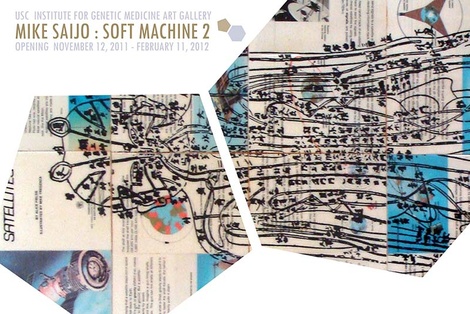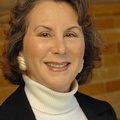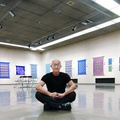William Arthur Ward, scholar, author, editor, pastor and teacher once said, “If you can imagine it, you can achieve it, if you can dream it, you can become it.” Ward also said, and one rarely hears, “Do more than dream—WORK.” The community capacity building, creative philosophy and work of Mike Saijo renews the vitality of both these quotes.
When asked how his philosophy and work developed, Mike reminisced, “Ever since I was a child, I used my imagination to escape and explore. I created an alternative space where I could visualize and imagine anything. I thought of it as an imaginary studio in my head. As I became familiar with the properties of materials, I began to understand the limitations and compatibility of certain materials. I’ve always begun my work with an idea, a vision in mind. The feeling I get from the idea—that—is the driving force that gets my feet on the floor in the morning.”
When questioned about his cultural heritage, he ventured, “My parents came from Japan. I am a Nisei from San Gabriel, California.” Saijo felt he grew up as a misfit between two cultures: American and Japanese. This inability to “fit in” chiseled his vision into the multifaceted tool it is today. “Considering that we each develop from our genetic coding, I’m always curious to see how the legacy from my ancestors has informed my personality as an artist and an American. I think children of immigrants have it the hardest. For an artist, though, this can be a good exercise. Developing the faculty to observe from a distance, from multiple points of view, and recognize the formation and dissolution of identity comes more easily to one who isn’t complacent, automatically entitled and, in a way, trapped in the family tradition. The balancing act of the immigrant development becomes an accelerated and on-going process that pulls questions and answers out of the interior and exterior worlds.”
Saijo’s multifaceted work is not constrained to conceptual boundaries. The work frees him to create unforgettable, often haunting images that, when combined and speaking to each other in an exhibit, reveal connections and resources previously unrecognized.
“I grew up in the suburbs outside of Los Angeles in a very strict environment imposed by ambitious parents from Japan. I was depressed during most of my youth; often punished for not meeting the expectations of immigrant parents. This caused me, early on, I think, to give up trying to please others. These emotional childhood experiences shaped my art, especially when I felt overwhelmed. I needed to create order out of the chaos and use my hands.
Saijo’s mother, self disciplined in exquisite Japanese calligraphy using brush and sumi ink, also started her own real estate business. His father, an 8th generation rice farmer, was also skilled with his hands. Growing up, Mike was exposed to his father’s broad strokes—building additions for homes, and a passion for sailing on his 25’ sailboat on the weekends. He worked for a Japanese financial corporation Fuji Bank as a clerk or entry level position, and rarely spoke at home about it.
The vision and determination Mike Saijo witnessed growing up forged his work ethic and are the motivation bequeathed upon him by these (not so) focused immigrants. “They actually disowned me several times for not meeting their expectations,” he winced, “but they prompted me to seek my own independence through art as long as I can support myself.”
This emotional frustration of living out the dreams of others caused me to visually express my own feelings and thoughts emerging from within. I began to create images that helped me map the world of ideas around me.”
The process of getting to know Saijo is akin to using tweezers to peel away the many thin skins of an onion to get to the core. The joy of the knowledge gained is in the journey of the uncloaking, the purity of the reveal. When trying to identify the moment he truly donned the mantel of artist and accepted the personal commitments and responsibilities that go with this career, Saijo recalled various starts and stops. His final decision to commit to the art discipline occurred a few years after college when he took a break from making art to travel with a carnival.
“After 8 months of playing at fairs and carnivals in the North West region with ex-cons and social derelicts, I finally asked myself if I was going to remain a “carney” for the rest of my life or if I should take my art career more seriously.” This question was his fork in the road and came in the guise of a mental breakdown. The carnival had stopped near a horse ranch in Weed, California. “My inability to make the decision brought me to the point where I had to consult with a few nearby horses. They seemed to have empathy and understand my internal conflict. Ever since then, I’ve felt that nature was on my side, guiding me with the force to create what had to be made. Art saved my life. It wouldn’t matter if I were in prison or on vacation somewhere, I’d always know I must constantly be making things, putting things together, making order out of chaos.”
The signature, collage-like, hard to categorize, multimedia, hodgepodge and culturally panoramic nature of Saijo’s work, often embodies the historic journeys of the underdog, the under-served and under privileged. Viewers find doses of his recent installation on the history of Boyle Heights, A Dream Deferred, caused them, mentally and emotionally, to draw the correlation between the struggle and pain of the African American, Japanese and Hispanic cultures.
Commenting on the key to his work, he states, “Nowadays, in this visually saturated culture, we’re competing with an overload of distractions, advertisements, sound bytes, flashing motion graphics, etc. This has made it important for me to create strong, bold, seductive images to draw the viewer in. Secondly, upon closer inspection, a viewer can ‘read’ a section of the piece and ‘get it’ based on personal knowledge and experience of the subject matter.
There are many layers to my work, gaps between the universes, and spaces to be explored. I never underestimate the intelligence of the viewer. There’s a certain amount of faith an artist must have—faith that the viewer will receive the data, process the information and come to his/her own conclusions concerning its message, based on the visual cues.”
Saijo’s work recently took another memorable twist when he found himself faced with an unexpected health issue. “I was scared to death. It made me think about why I make art. It made me want to open up more, in a radical way. I didn’t want to die locked in a single style. egocentric and repetitive, foregoing friction and doubt for a safe self situation. Seeking a signature style, exploring only the internal landscape—that felt like a trap to me. I began to focus on community and sociological research as part of my process to explore alternative solutions for complex social issues.” This decision freed him. He opened up and expanded his color palate to include bright colors and lighter materials after over 10 years of working in black and white.
Today, Saijo creates with the intent, “...to focus on social order, to create art that not only brings people together but communicates ideas and values shared collectively.” He paraphrases Nicholas Bourriad, the curator who termed the new millennium art descriptive, “AlterModern.” “The role of art is not to form imaginary or Utopian realities. It is to actually be ways of living and forge models of action within the boundaries of existing realities.”
Saijo speaks of his current artistic mission with a new found importance. “It is essential to me that the work builds capacity. Without that, the work is not sustainable. I’m beginning to think about the theoretical and practical points of departure of my practice. I’m focusing on the whole of human relations and their social content, rather than an independent and private space. My desire, my hope is that people will get to see their own social roles through my community-based public art installations. I hope they will discover they, themselves, are essential to the creative process of generating collective meaning.”
Saijo embraces the Nicolas Bourriard’s quote, “‘Artists manipulate social forms, reorganize them, and incorporate them in original scenarios, deconstructing the script on which the illusory legitimacy of those scenarios were grounded. The artist deprograms in order to reprogram, suggesting that there are other possible usages and techniques, tools, and spaces, at our disposition.’ Artists, when most efficiently employed, can influence public, private, nonprofit, faith-based, academic and media leaders to evolutionarily innovate and manage change. Art can serve as a catalyst, an integral component of a larger, communal effort to focus attention on the patterns and process of socio-economic issues and enable collaborative action to leverage existing resources.”
From his first work of art—a line he drew on a wall, as a child, Mike Saijo has followed his dreams and evolved his practice to effectively build cultural capacity. Saijo’s process has put to the test William Arthur Ward’s quote, “IF YOU CAN IMAGINE IT, YOU CAN ACHIEVE IT.” He has not only dreamed it and imagined it, he’s achieving it!
* * *
Mike Saijo’s Soft Machine: DNA exhibit opening in November with a preview VIP reception on November 8, 2011 for community leaders. The reception will feature TED Senior Fellow Robert Gupta and Charlie Lustman, cancer survivor/pop musician now on a national tour. This is a model of the IGM Art Gallery’s community capacity building with fine art and music.
© 2011 Yolantha Harrison-Pace








